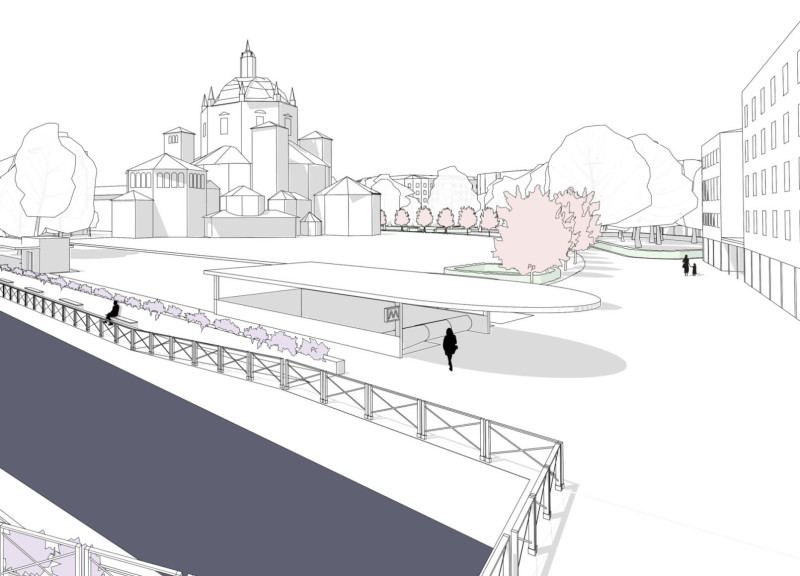5 key facts about this project
The revitalization of the Navigli canal area in Milan aims to create a more connected, community-focused urban environment. Set against the city's rich historical backdrop, the project enhances public spaces along the Navigli, turning them into lively areas for social activity. The design intertwines past and present, highlighting the cultural significance of the area while embracing modern urban needs.
Landscape Design
A significant aspect of the project is its focus on landscape design. The introduction of local plant species, such as Plumbago capensis 'Coerulea,' Albizia julibrissin, Hibiscus syriacus, and Prunus cerasifera 'Pissardii,' enhances the environment. These plants not only beautify the space but also encourage biodiversity. Thoughtful placement of greenery is intended to complement the ecological benefits, using irrigation practices that support the overall health of the area.
Public Amenities
The design includes various public facilities aimed at serving the needs of the community. Food courts, outdoor libraries, community gardens, and playgrounds are integrated into the landscape. Such amenities promote social interaction and cultural exchanges, making the canal area accessible to all. This arrangement transforms the public spaces into places where people can come together, fostering a sense of community and belonging.
Water Access
Access to water is another crucial element. Gathering spaces along the canal invite residents and visitors to engage with the water, providing areas for leisure and relaxation. Pathways and bridges are designed to enhance movement, allowing pedestrians and cyclists easy access to these features. This focus on mobility ensures that visitors can enjoy the natural surroundings and participate in community activities.
Street Design
The streets surrounding the Navigli are reconfigured to enhance the urban experience. Wider road sections allow for improved pedestrian access and the introduction of more green spaces. The design considers existing challenges, such as overshadowing from mature trees, and proposes a planting strategy that maintains visibility. Broader lawns within the park also create better sightlines to key historical landmarks, blending modern space with the city’s history.
The design culminates in a well-thought-out balance of natural and built elements. Gathering spaces are thoughtfully arranged to encourage interaction, allowing people to engage with both the canal and one another. The overall approach aims to create a welcoming environment that reflects the character of Milan's urban life.






















































